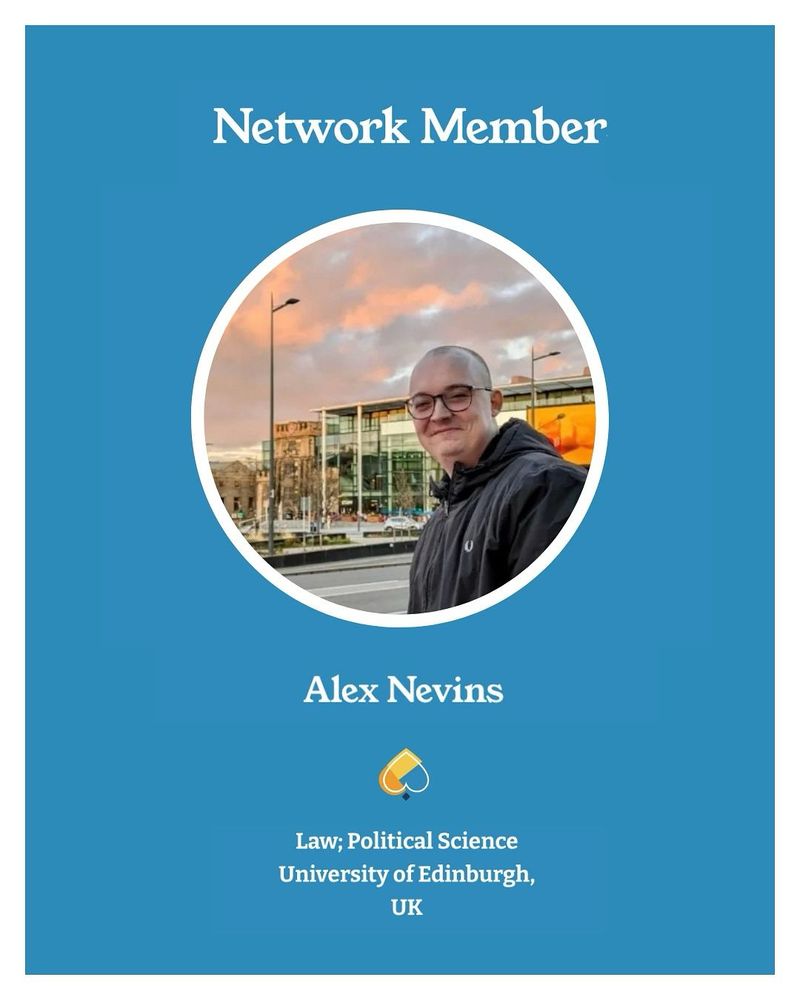

🔗Find out more at aroaceresearch.com
@mcsociology.bsky.social @acefeministmaya.bsky.social
journals.sagepub.com/doi/full/10....

@mcsociology.bsky.social @acefeministmaya.bsky.social
journals.sagepub.com/doi/full/10....
T.N. Hutchinson is a PhD researcher in Literary Studies at the University of York. They work on decadence studies, aestheticism, and Victorian/Edwardian literature.

T.N. Hutchinson is a PhD researcher in Literary Studies at the University of York. They work on decadence studies, aestheticism, and Victorian/Edwardian literature.
@diversityread.bsky.social is an amazing project dedicated to diversifying and decolonising the philosophical canon.
@diversityread.bsky.social is an amazing project dedicated to diversifying and decolonising the philosophical canon.

🧡💛🤍🩵💙
Here is why philosophers should care about the asexual and aromantic spectrum (aspec) 👇

🧡💛🤍🩵💙
Here is why philosophers should care about the asexual and aromantic spectrum (aspec) 👇
@helenaesser.bsky.social is an Independent Scholar in Germany. Her area of research is Victorian and neo-Victorian gender and popular culture, with specific publications on steampunk and Ouida.

@helenaesser.bsky.social is an Independent Scholar in Germany. Her area of research is Victorian and neo-Victorian gender and popular culture, with specific publications on steampunk and Ouida.
@claudiasterbini.bsky.social is a PhD Researcher at the University of Edinburgh, working on the construction of stigmas of asexuality in nineteenth-century sexology and literature.

@claudiasterbini.bsky.social is a PhD Researcher at the University of Edinburgh, working on the construction of stigmas of asexuality in nineteenth-century sexology and literature.
Wenmei Bai is an Independent Researcher in Geography working on queer geographies, asexual domesticities, and queer/asexual futurities. She is part of the network organising team and will help with the newsletter & communication!

Wenmei Bai is an Independent Researcher in Geography working on queer geographies, asexual domesticities, and queer/asexual futurities. She is part of the network organising team and will help with the newsletter & communication!

@jtwelsch.bsky.social is Director of Liberal Arts and Senior Lecturer in English and Creative Industries at the University of York. He works on asexuality, creativity studies, creative industries, creative writing, queer history, and creative-critical practice.

@jtwelsch.bsky.social is Director of Liberal Arts and Senior Lecturer in English and Creative Industries at the University of York. He works on asexuality, creativity studies, creative industries, creative writing, queer history, and creative-critical practice.
Check out the paper: www.kcl.ac.uk/news/asexual...

Check out the paper: www.kcl.ac.uk/news/asexual...
Our experimental study suggests misconceptions about asexuality may be common, and that asexual people are likely to face greater hostility than other groups
www.kcl.ac.uk/news/asexual...

Our experimental study suggests misconceptions about asexuality may be common, and that asexual people are likely to face greater hostility than other groups
www.kcl.ac.uk/news/asexual...
@theyasminbenoit.bsky.social is an asexual activist and Visiting Fellow at The Policy Institute, King’s College London. She is a researcher in Public Policy working on public attitudes towards asexuality.

@theyasminbenoit.bsky.social is an asexual activist and Visiting Fellow at The Policy Institute, King’s College London. She is a researcher in Public Policy working on public attitudes towards asexuality.
@alex-nevins.bsky.social is a PhD researcher in Law and Political Science at the University of Edinburgh working on the legal recognition of asexual-spectrum identities.

@alex-nevins.bsky.social is a PhD researcher in Law and Political Science at the University of Edinburgh working on the legal recognition of asexual-spectrum identities.
@karencuthbert.bsky.social is a sociologist at the University of Glasgow working on asexuality and its intersections (gender, disability, and autism) as well as celibacy/abstinence.

@karencuthbert.bsky.social is a sociologist at the University of Glasgow working on asexuality and its intersections (gender, disability, and autism) as well as celibacy/abstinence.
This has been a long time in the making and @politybooks.bsky.social have been fantastic throughout the whole process. 🥂

This has been a long time in the making and @politybooks.bsky.social have been fantastic throughout the whole process. 🥂
⬇️Give it a listen⬇️
⬇️Give it a listen⬇️


Yash Gupta is a research fellow and doctoral candidate in Postcolonial Literary and Cultural Studies at the University of Bremen, Germany. He works on post/coloniality and asexuality, Desi asexualities, asexual intimacies, and digital asexualities.

Yash Gupta is a research fellow and doctoral candidate in Postcolonial Literary and Cultural Studies at the University of Bremen, Germany. He works on post/coloniality and asexuality, Desi asexualities, asexual intimacies, and digital asexualities.
Register here: laurin.tirpitz.me/event/aceworkshop25

Register here: laurin.tirpitz.me/event/aceworkshop25
Laurin is an Independent Researcher in Philosophy in Germany. They are working on asexuality, aromanticism, feminist, trans and queer philosophy, and philosophy of sex and sexuality.

Laurin is an Independent Researcher in Philosophy in Germany. They are working on asexuality, aromanticism, feminist, trans and queer philosophy, and philosophy of sex and sexuality.

Why? Because asexual perspectives can help us better understand sexuality—and gender, race, disability, family, love, etc.
Here’s why:
Why? Because asexual perspectives can help us better understand sexuality—and gender, race, disability, family, love, etc.
Here’s why:
@ellisisfine.bsky.social is a PhD student in Sexuality and Gender Studies at the University of Birmingham working on 20th century literature and life-writing, queer theory and history of education.

@ellisisfine.bsky.social is a PhD student in Sexuality and Gender Studies at the University of Birmingham working on 20th century literature and life-writing, queer theory and history of education.


